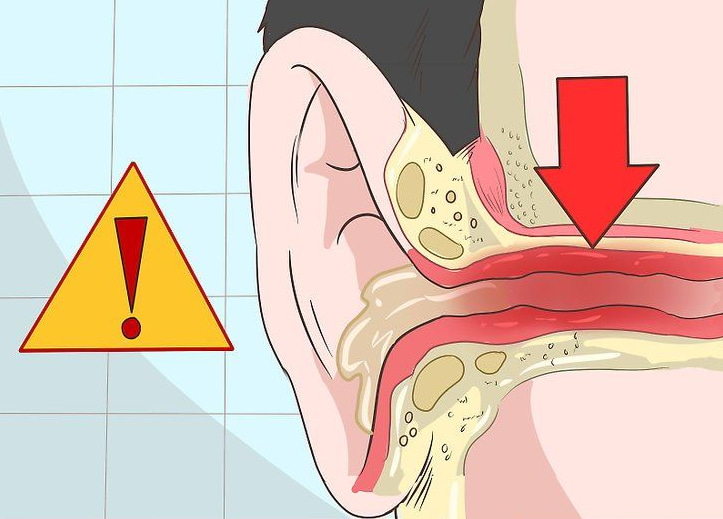How to Get Water Out of Your Ears? Have you just wrapped up a swim or a shower? Do your ears sometimes feel a bit clogged or like sounds are muffled? You might have some water trapped in there!
Table of Contents
You might be surprised to learn that wearing earbuds can actually trap sweat in your ears. If you don’t address this issue quickly, you could end up with an infection called otitis externa, commonly known as swimmer’s ear.
When water lingers in your ear canal, the bacteria that naturally reside there can multiply and lead to an infection. It’s crucial to remove the water safely.
If you don’t, you could increase your chances of developing swimmer’s ear. If you have a ruptured eardrum or ear tubes, you need to be especially cautious about how you dry your ears.
What to Do When Water Gets Stuck in Your Ear?
If you’ve got water stuck in your ears, here’s how to safely get it out.
Start by drying your outer ear with a soft towel or cloth, but remember, don’t shove the cloth into your ear canal. Tilt your head to one side to help the water drain out, and gently tug on your earlobe.
This little trick can help straighten your ear canal, making it easier for the water to flow out. Next, grab a blow dryer and set it to the lowest setting. Aim it toward your ear, but keep it at least a foot away to avoid any heat damage.
You might also want to try some over-the-counter drying drops. If you prefer a DIY approach, you can whip up your own drying drops by mixing equal parts of white vinegar and rubbing alcohol.
Just pour a teaspoon of that mixture into each ear, tilt your head, and let it drain out.
Mistakes to Avoid When Removing Water from Your Ears
Using the wrong techniques to get water out of your ears can lead to scratches in your ear canal or push earwax further in.
So, steer clear of these drying methods, or you might end up with an infection instead of relief. First off, avoid cotton swabs.
They can shove earwax and dirt deeper into your ear canal, strip away the protective wax, disturb the natural bacteria in your ear, or even irritate the sensitive skin inside.
Also, keep your fingers and nails out of your ears. They can easily scratch that delicate skin. And if you or your child has ear tubes or a ruptured eardrum, skip the hydrogen peroxide or drying drops altogether.
Signs You Might Have an Infection
Look out for these symptoms of swimmer’s ear — just in case the drying tips didn’t work:
- Itching in your ear canal
- Redness inside your ear
- Discomfort or pain that gets worse when you pull on your outer ear or push on the little bump in front of your ear
- Clear, odorless fluid that drains from your ear canal
If you do have these symptoms, your doctor may prescribe eardrops. The drops will kill the bacteria or fungus causing the infection and will ease your pain, swelling, and inflammation.
How to Keep Water Out
Sometimes the best offense is a good defense. To stop moisture from building up in your ears to begin with, try these tips.
Use hydrogen peroxide with your doctor’s approval (unless you have tubes in your ears). If you have wax buildup, they may suggest you clean your ears with a 3% hydrogen peroxide solution.
Mix one part hydrogen peroxide with one part water and put about half of an ear dropper full in your ear. Let it bubble up. Then turn your head to the side, gently pull on the top of your ear, and let it drain.
Remove earbuds if you’re sweaty.
Coat a cotton ball with petroleum jelly and slip it into your outer ears during a bath.
Block your ears with cotton balls when you use hair spray or hair dye.
Use earplugs and a swim cap when you go into the water.
Have your doctor remove earwax if you think you have a problem with wax buildup. Yes, it protects your ears, but too much can trap water in the canal. Always check with your doctor. Never try to get it out yourself.
